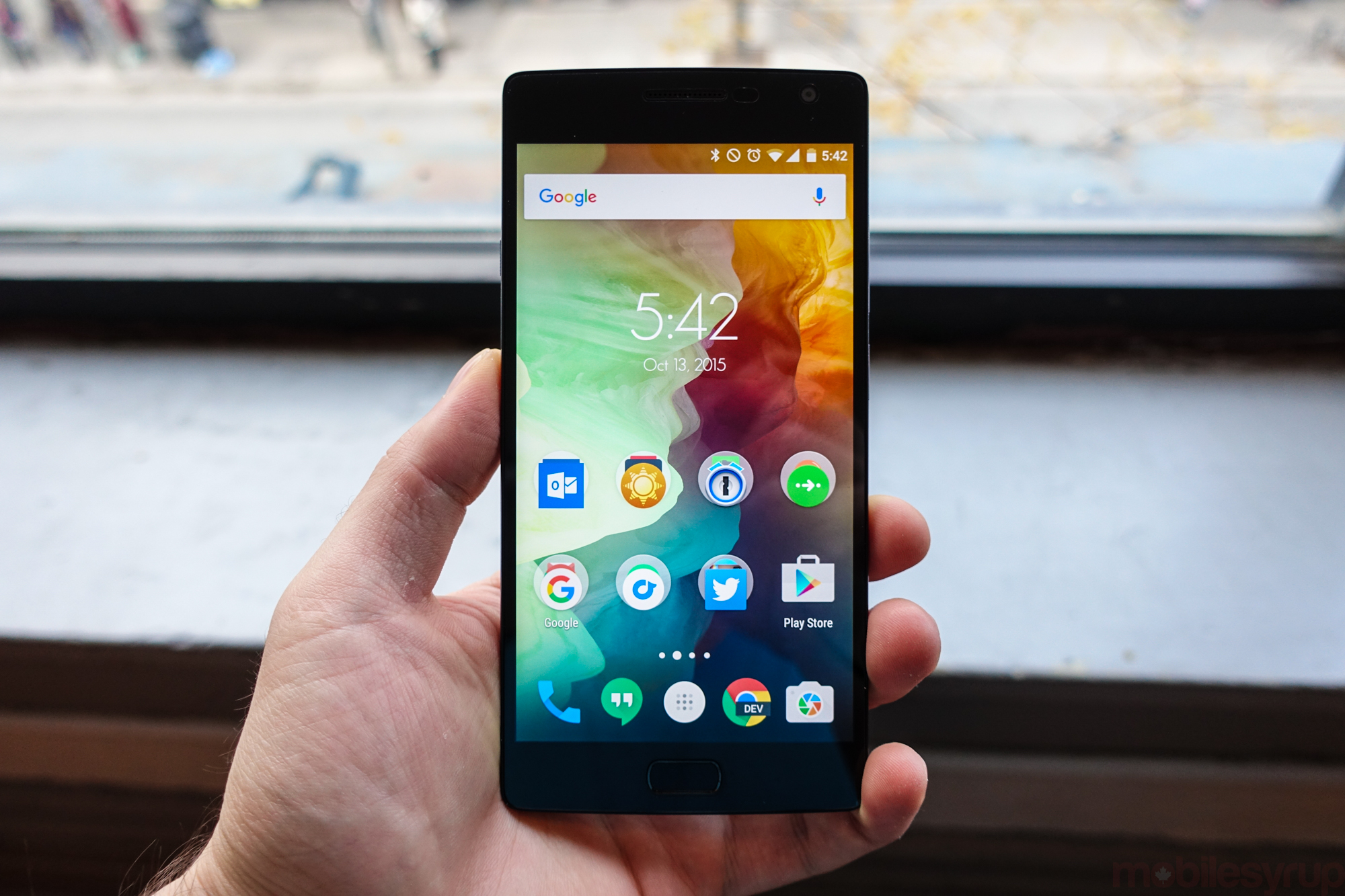
I did an experiment a few days ago. I went to a crowded square in Toronto and asked a bunch of random strangers three things: Do you know what an iPhone is? All of them nodded yes. What about a Galaxy? Again, all nods. How bout the OnePlus Two, the sequel to the popular OnePlus One? Blank stares. A couple of people said they’d heard of it — one said she had a friend who bought the original, the other thinks he read about it on a website — but the majority had no idea.
The distance between hardcore smartphone users pounding keyboards for a OnePlus 2 invite, and those with little to no recognition of the burgeoning hardware upstart is enormous. But that doesn’t diminish the phone itself which, from a company less than three years old, is an achievement.
Odd choices aside — who leaves out NFC but throws in a USB-C port without Fast Charge? — the OnePlus 2 is an excellent choice for most Android users on a budget. Those sacrifices aren’t showstoppers, but neither is the phone itself, despite OnePlus’s best marketing efforts. After using the phone for a few weeks, the OnePlus 2 turns out to be a lot like the company itself: impressive from afar, but awash with compromises up close.
About this review
It was pretty cold outside when most of this review was written, though it is now warm in my apartment.
Oh, you want to know about the OnePlus 2. Fine. It was running Oxygen OS 2.1 with Android 5.1.1, the latest update (as of this writing) on a 64GB model, which comes with 4GB of RAM.
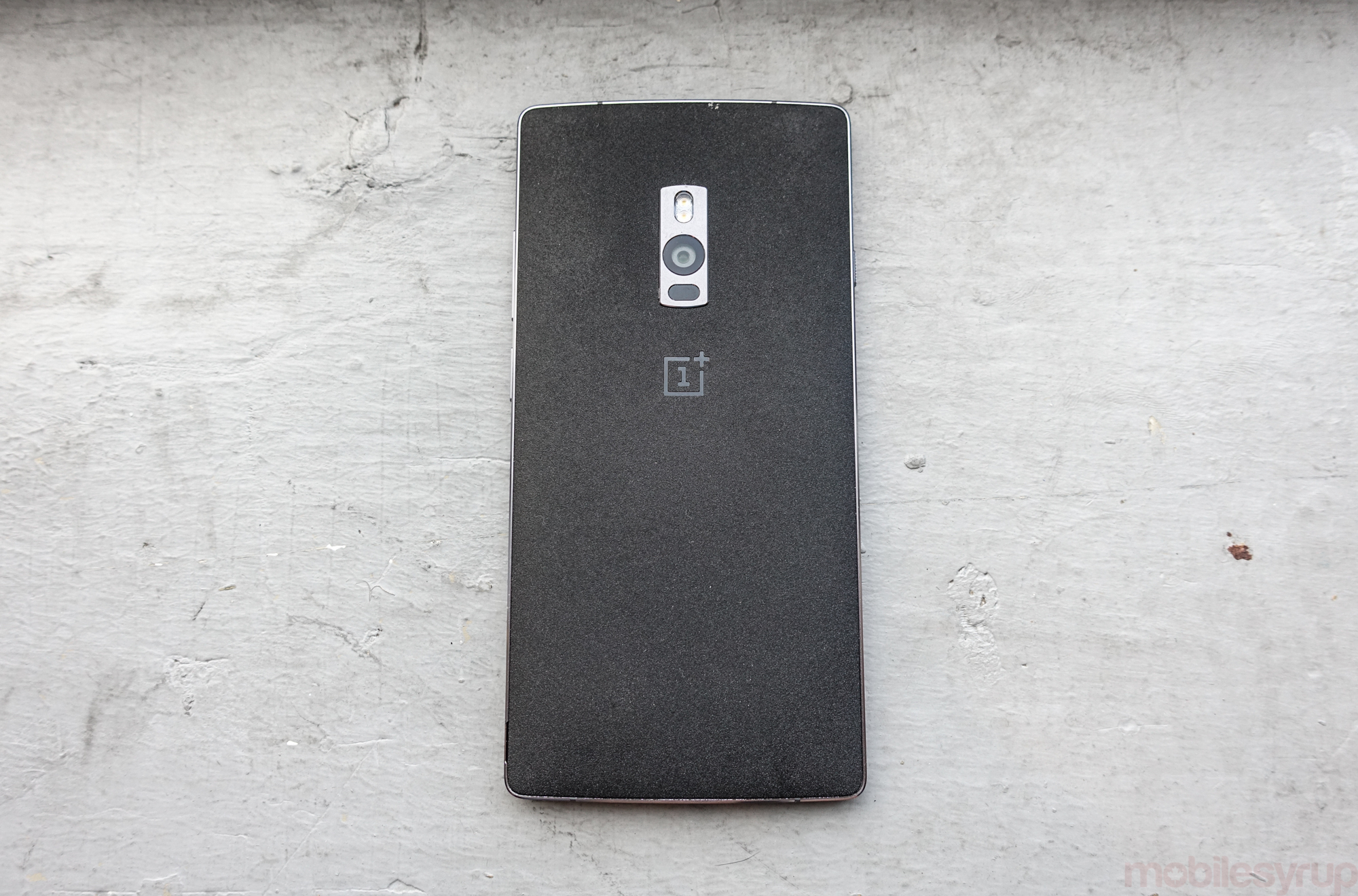
Specs
- Android 5.1.1 w/ Oxygen OS 2.1
- 5.5-inch 1920 x 1080 pixel in-cell IPS display
- Qualcomm Snapdragon 810 SoC (4x Cortex-A57 @ 1.8Ghz, 4x Cortex-A53 @ 1.6Ghz)
- 3GB RAM (16GB model) / 4GB RAM (64GB model) LPDDR4
- 16GB / 64GB variants
- 13MP rear camera w/ 1.3 micron pixels, F2.0 lens
- 5MP front-facing camera
- 4K video capture @30fps, 720p slo-mo video capture @120fps
- Bluetooth 4.1, WiFi 802.11ac (dual-band)
- 3,300mAh battery
- USB 2.0 C-Type connector
- LTE Bands 1/2/4/5/7/8/12/17
- 151.8 x 74.9 x 9.85 mm
- 175 grams
- dual nano-SIM

Device & Display
The OnePlus One emerged fully-baked, the remnant design of the Oppo Find 7 with a bunch of small aesthetic changes, like moving the power button to the right side of the phone, to appeal to North American audiences. It wasn’t the most attractive phone, but many had a curious affection for the product.
The OnePlus 2 has none of that. It’s a black rectangle, like many of its peers, with a blocky frame and that exaggerates its plainness. But its utilitarianism is not an encumbrance: the magnesium alloy frame is stronger and more durable than last year, and despite its identical screen size I found it easier to hold for longer periods of time. Also improving its usability is its relative narrowness for a device of this screen size; despite the 5.5-inch display, it is only 74.9mm wide, making it easier to reach across the horizontal length of the screen with one’s thumb.
OnePlus performed some additional streamlining to the Two (aka 2), adding a fingerprint sensor-combo-home button below the 5.5-inch 1080p panel, with nondescript capacitive slashes to either side, befitting the ultra-customizable nature of the device.
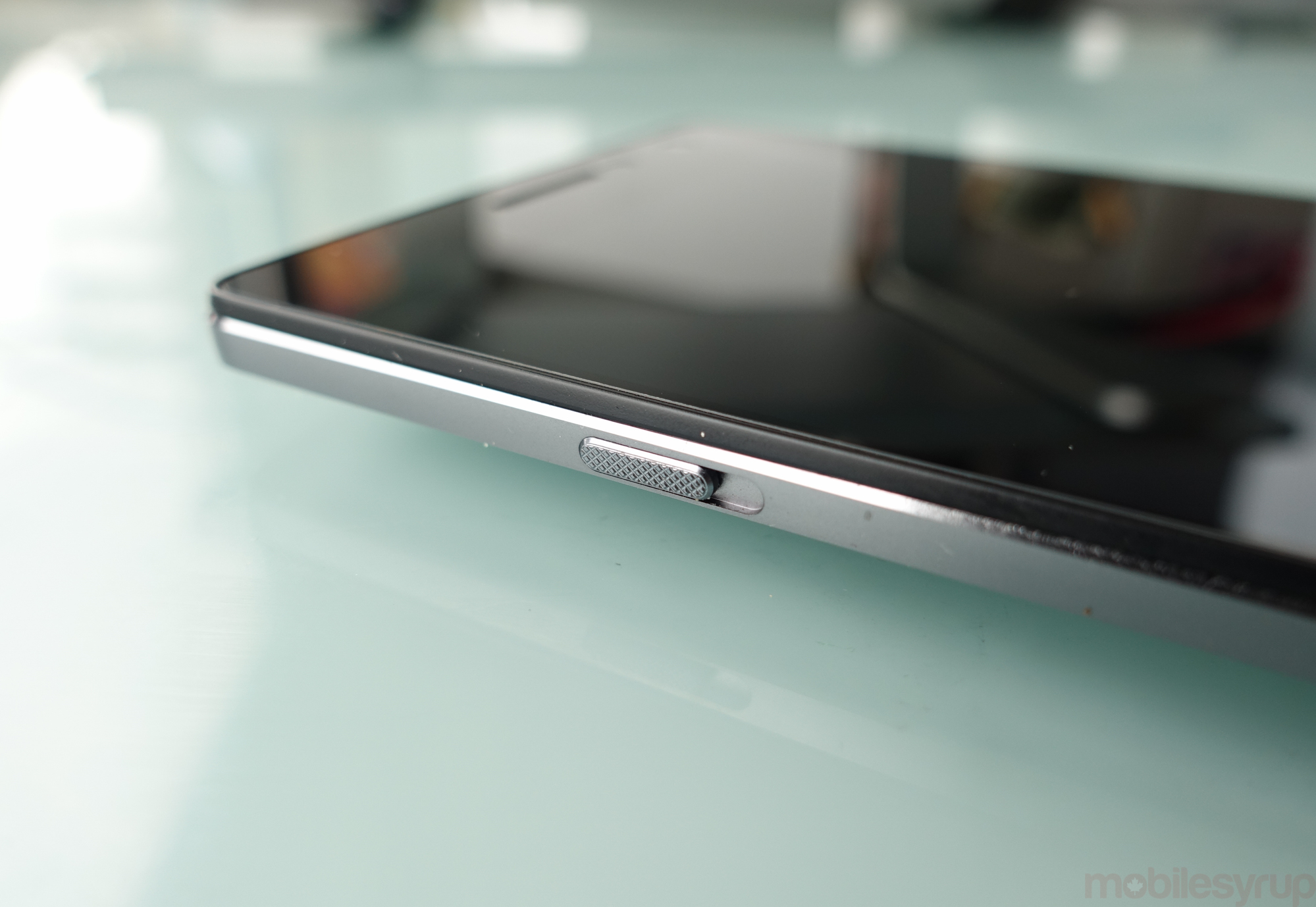
On the left side of the phone sits an Android oddity, one that I’ve come to love and loathe depending on the situation. Essentially a three-setting mute toggle, OnePlus saw fit to mimic Lollipop’s (and soon to be Marshmallow’s) tiered volume settings with a hardware switch, something that iPhone users have for years taken for granted.
When the key is in its top position, all notification sounds are muted except for alarms (an amendment we’re grateful for in Android 5.1, since the default “mute” behaviour in Android 5.0 was to subdue alarms as well). Set to the middle, Lollipop’s “Priority” setting takes over, which allows through only those contacts explicitly whitelisted. And when in the lowest position, the system lets through all notifications.
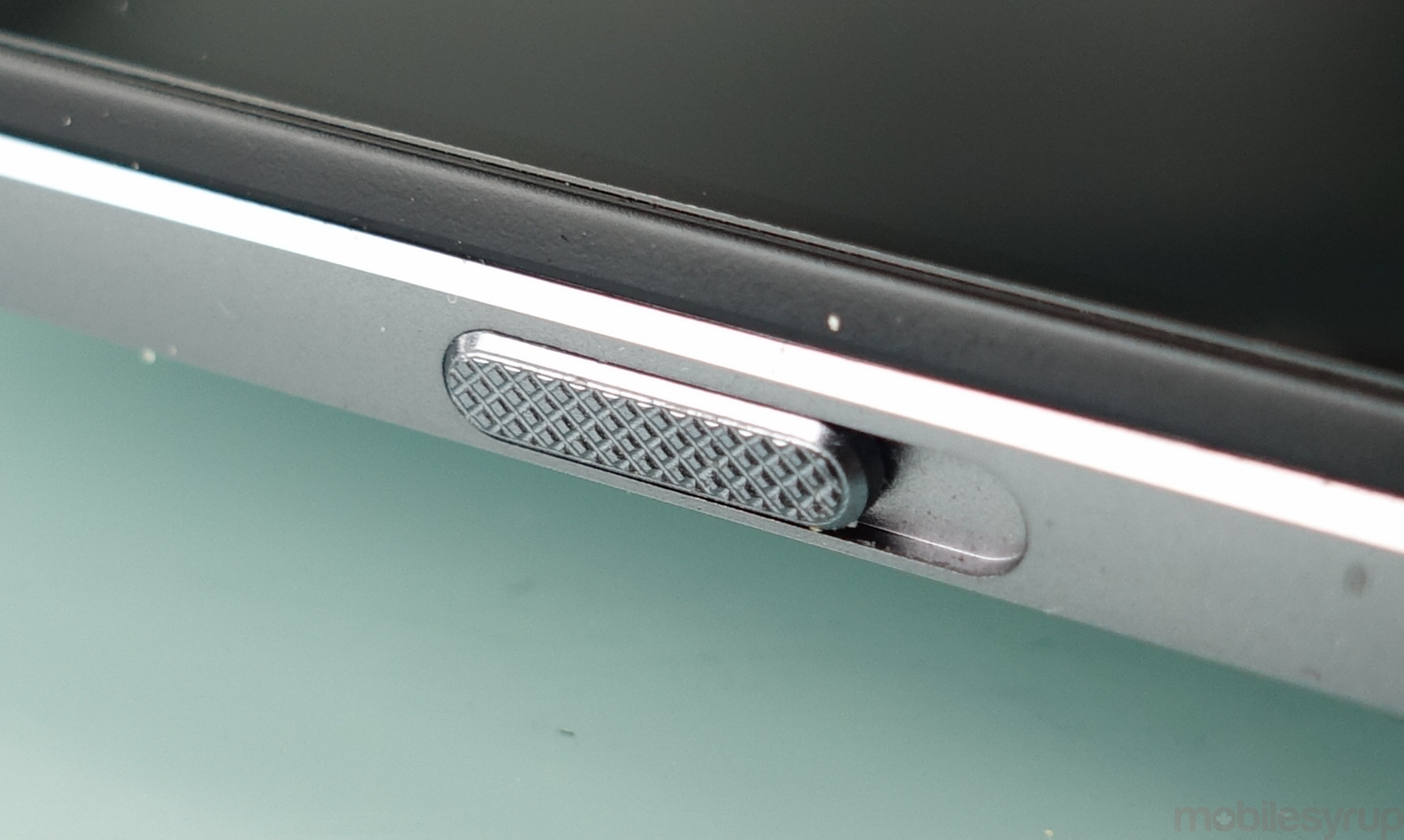
The only problem with this setup is that Android Wear controls the digital switches independently, so silencing your phone through a Moto 360 bypasses the OnePlus 2’s hardware intentions. It takes just a single shift to give ownership back to the slider again, but this workflow essentially undermines OnePlus’s plans.
Elsewhere, the fingerprint sensor, which doubles as a home button, is about as fast as one can expect from a smartphone these days. It doesn’t quite match the insane unlocking speeds of the iPhone 6s, and seems to be a hair behind the iPhone 6 and Samsung Galaxy S6/Note 5, but it does a great job. And it has a really cool trick that I’d like to see more smartphones adopt: unlocking when the display is off. The home button/fingerprint sensor combo even works when the OnePlus 2 is set to show on-screen buttons.
The home/fingerprint button does have a smaller surface area than it would appear, though, so it’s necessary to be more precise than with a Galaxy or iPhone. Whether this is a hardware limitation with the sensor or something that can be tweaked in software, OnePlus isn’t saying.
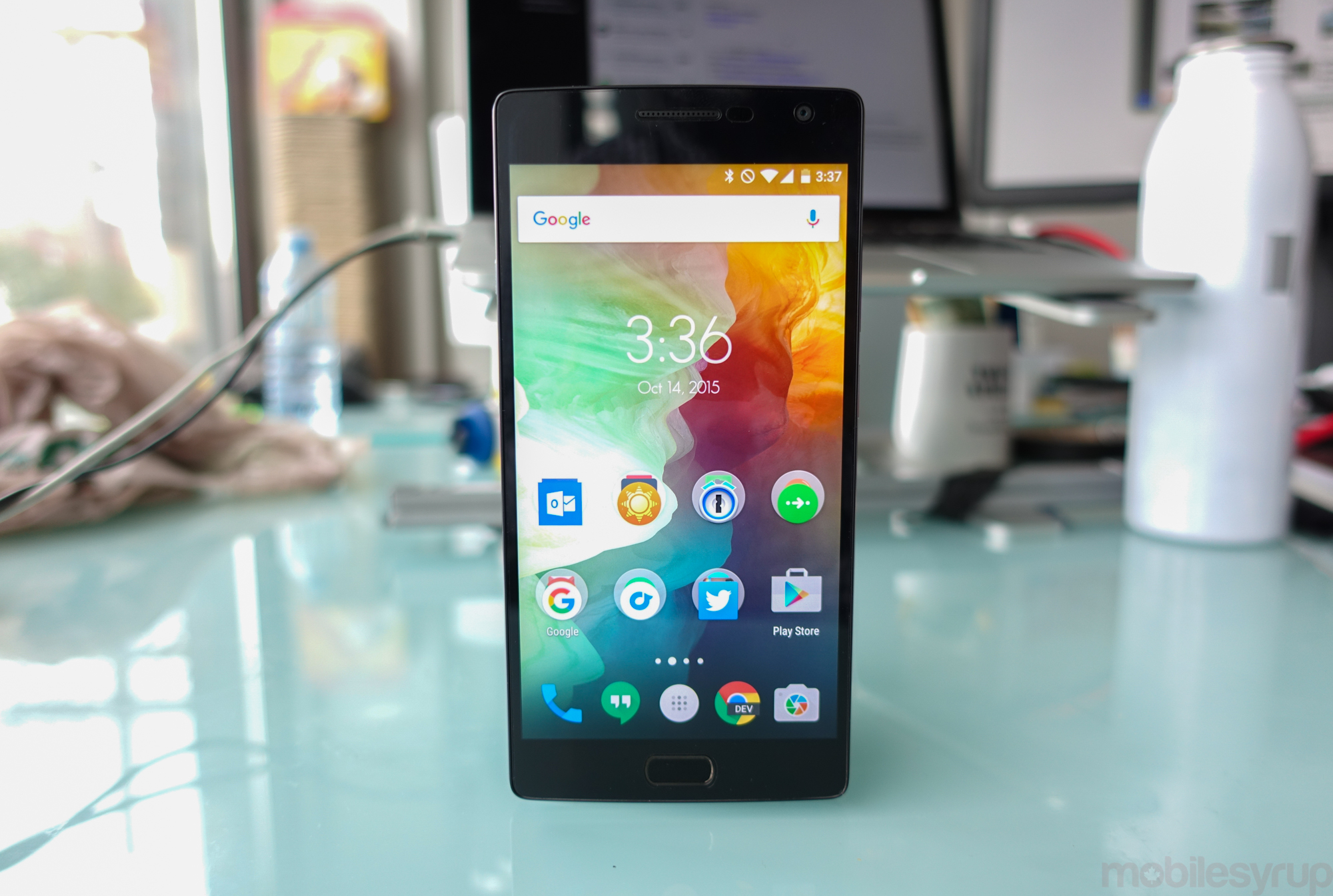
And then there’s the display. Some early reviewers complained that the 1080p panel was too low-resolution compared to recently-released flagships like the Galaxy S6 and LG G4. Others said that its colour reproduction, white levels and dynamic range were underwhelming compared to its predecessor. And while some of those tenets are true — the default colour balance is too cold and blue — OnePlus has made some improvements to the display in OxygenOS 2.1, adding a colour balance slider and other minor tweaks.
Subjectively, the screen looks really nice — sharp and bright with excellent viewing angles — and I commend OnePlus for remaining at 1080p. Unlike Samsung, OnePlus has to source display panels from other vendors, and likely couldn’t secure 2K panels at the price and in the quantity it needed to keep the OnePlus 2 under $350 USD.
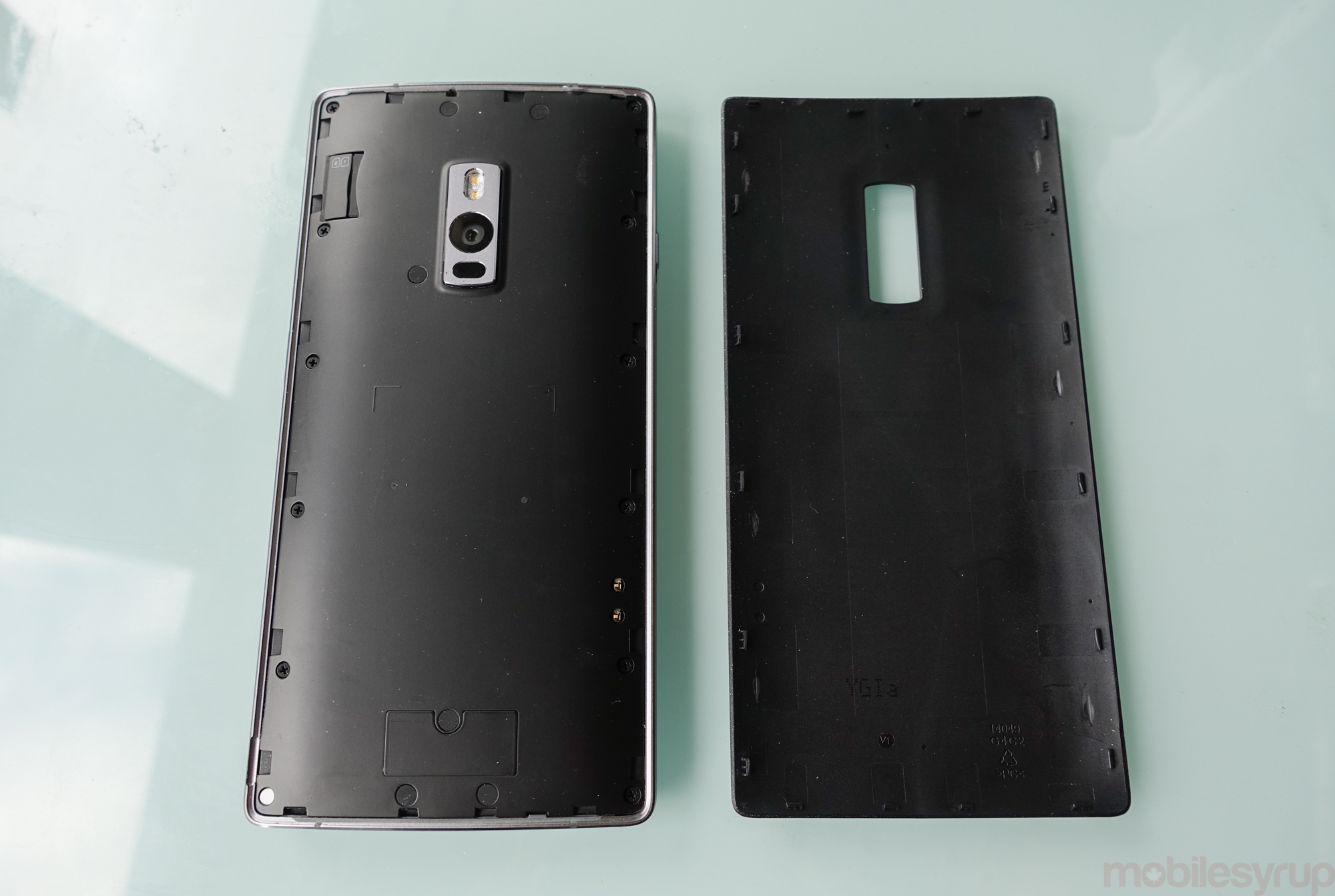
Turning it around, the device’s back is removable, but lacks a replaceable battery. OnePlus has shifted the camera module and flash down to roughly a quarter way down the middle of the device, which avoids a supporting finger covering the lens. Unfortunately, the new placement poses new problems, as I found my index finger naturally rested on top of the camera module when using the phone in my right hand.
As with last year’s model, the OnePlus 2 comes with a sandpaper-feeling Sandstone Black cover, though the company has solved its StyleSwap cover distribution issues, adding two wood variants — Rosewood and Apricot — along with Bamboo and Kevlar options. The default cover fits well, and adds a perfect amount of grip to the Two, while the StyleSwap covers protrude disarmingly from the rear casing, adding two to three millimetres of unwelcome girth to the device. And at $34.99 each, they’re not worth it unless you’re really yearning for something different.
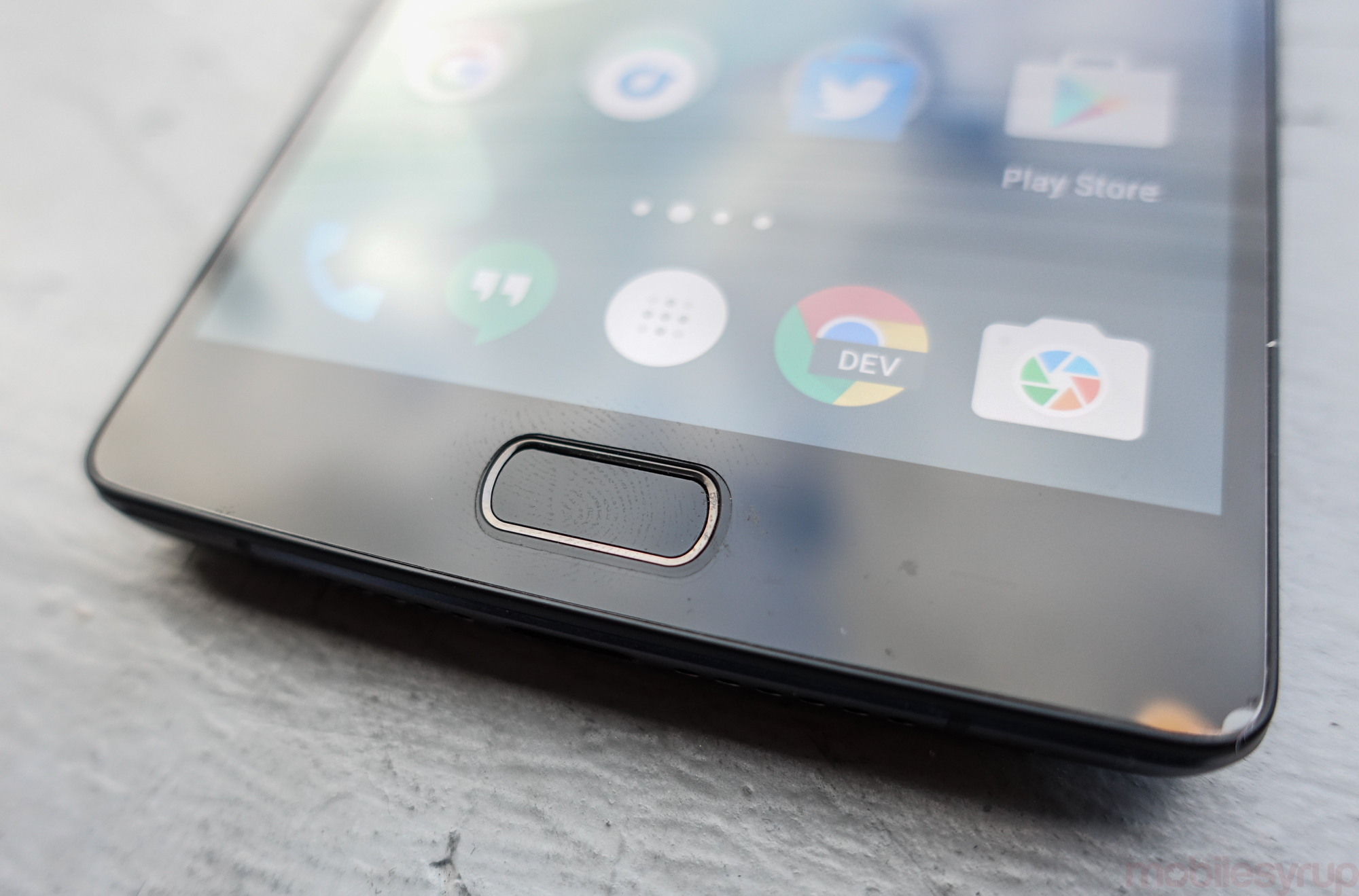
Software & Performance
The OnePlus 2 ships in two variants, identical in all ways but RAM and storage size. The cheaper model, which costs $409 CAD, arrives with 3GB of LPDDR4 RAM and 16GB of non-expandable storage. For $70 more, you get an extra gigabyte of RAM (4GB of LPDDR4 RAM) and 64GB of non-expandable storage. The cheaper model is great value, though the lower storage count will likely affect media- or app-heavy users down the road. But the 64GB variant, which comes to nearly $600 CAD after tax, shipping and duties, is a significant purchase.
This means the OnePlus 2 needs to stand on its own — it’s no longer an inexpensive smartphone that happens to be pretty good at a lot of things. At this price, it needs to be an excellent smartphone, period. Thankfully, in most respects it is. The device runs a Qualcomm Snapdragon 810 chip, which despite critical misgivings is an excellent performer. My OnePlus 2 never ran hot, nor did I notice significant performance drops after long gaming sessions. (The S810 has been shown to drastically throttle its clock speeds when mightily tested for long periods of time, but those situations are unusual in real-world usage.)
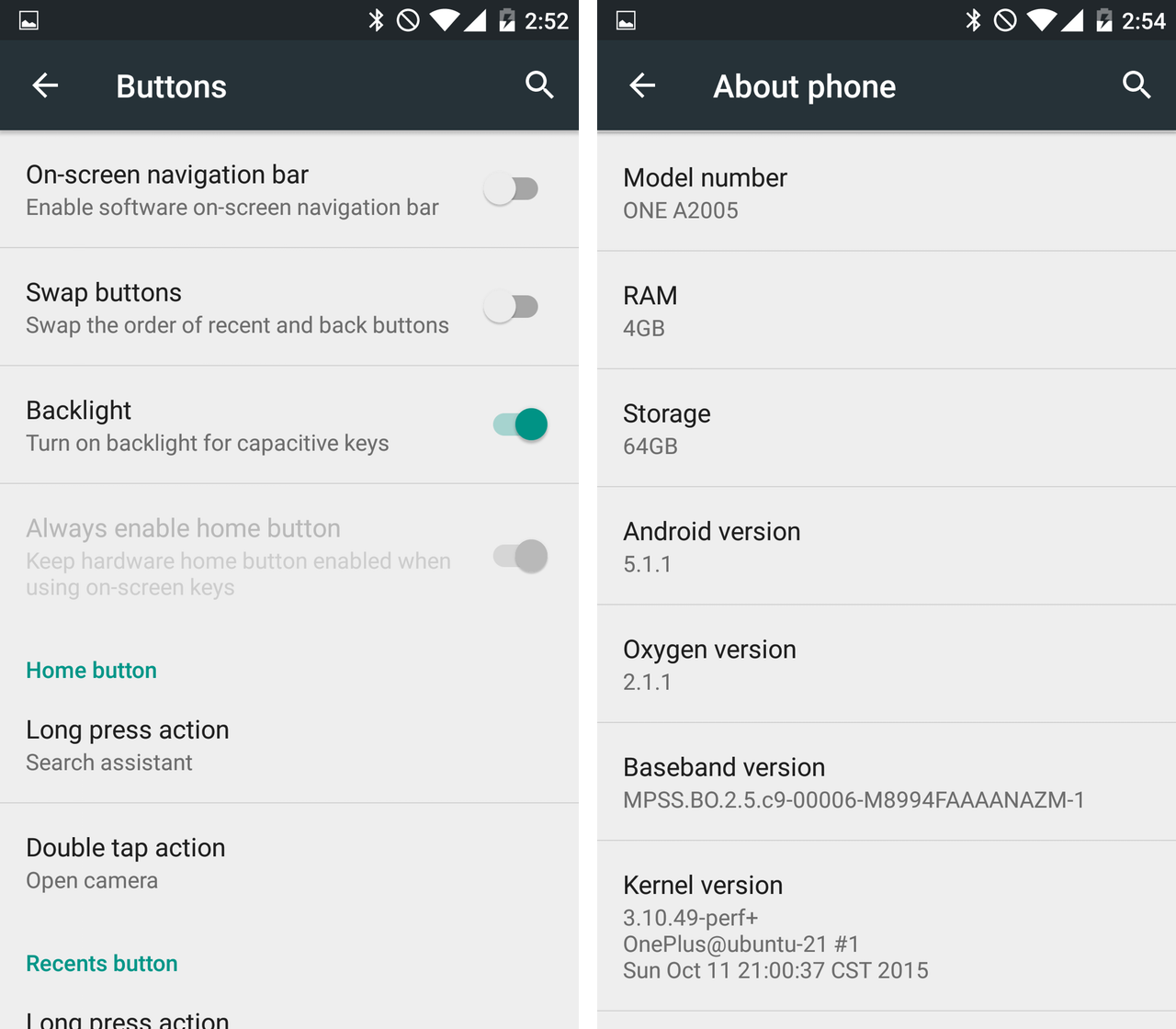
Coupled with OxygenOS 2.1, OnePlus has managed to create a fantastic combination of near-stock Android, abundant customizations, and near-flawless performance. And though I tested the more capacious variant, I can’t imagine much quantifiable difference in app loading speed and overall performance between the 3GB and 4GB versions. In short, the OnePlus 2 feels very much like a high-end Android phone.
Fans of the OnePlus One may lament the replacement of Cyanogen OS with the company’s own OxygenOS, but after several iterations and a few months of maturity I don’t miss COS at all. The OnePlus 2 offers myriad customization options, including familiar screen-off gestures such as launching the camera by drawing a circle, or new shortcuts like opening the camera app by double-tapping on the hardware home button.
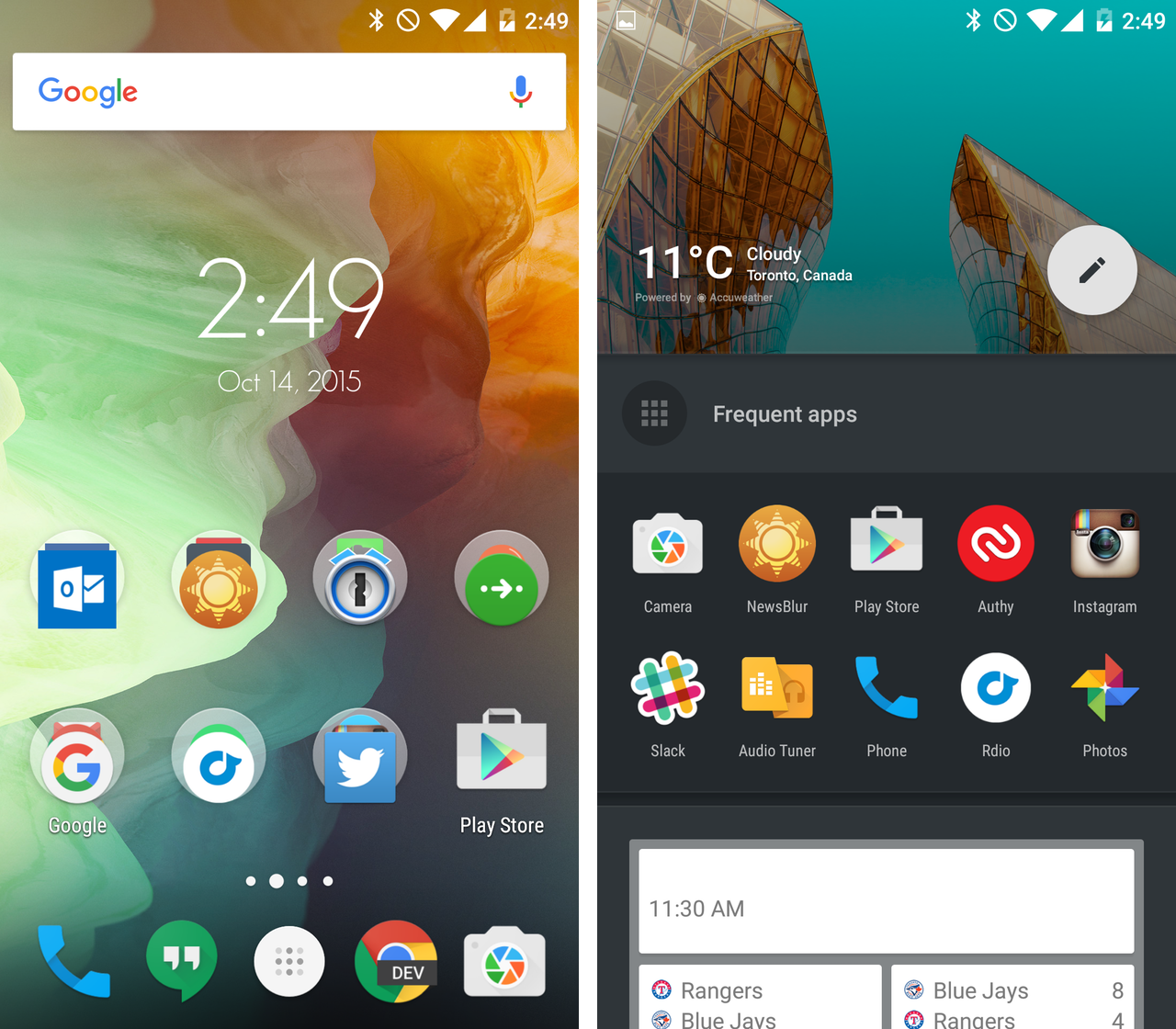
OnePlus has also replaced the Google Now Launcher with its own variant, omitting the left-side Google Now screen in favour of something called the Shelf. While OnePlus claims that the Shelf will evolve and add features over time, right now it’s a sorry excuse for a Google Now replacement, featuring frequent apps, contacts and a few extra spots for widgets. Ironically, you can add a Google Now widget to the Shelf, but I still think the feature is quarter-baked.
Thankfully, the quick setting shortcuts in OxygenOS can be customized, so you can finally hide that useless Invert Colours button you’ve never touched. While OnePlus appears to be fairly conservative in its changes to stock Android 5.1.1 Lollipop, OxygenOS is growing into a great standalone product. And most of the bugs and app incompatibility from the early versions have been resolved, eliminating the need to report on a handful of apps that, when the OnePlus 2 was released in August, either didn’t work with the phone or severely misbehaved.
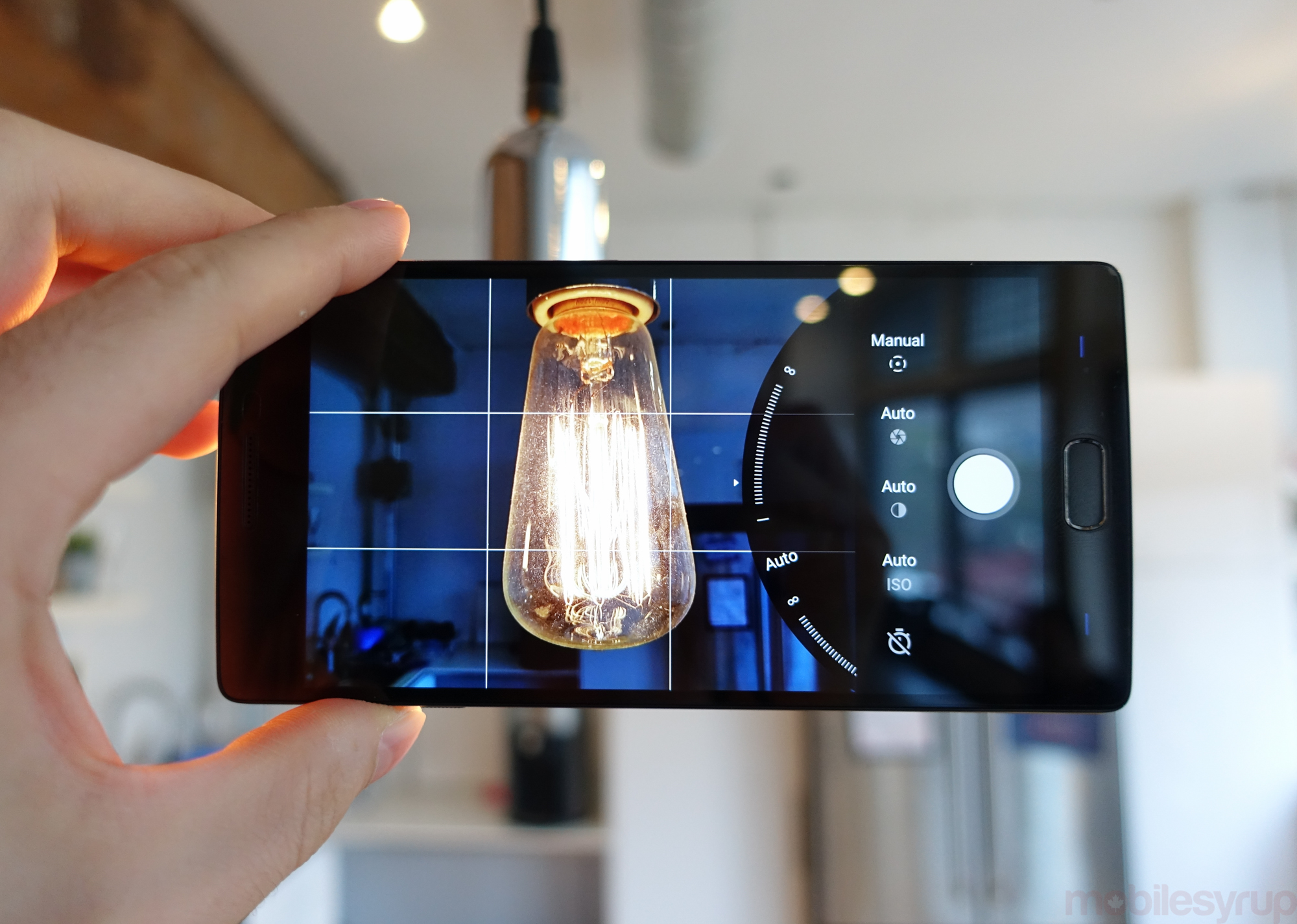
Camera
The OnePlus 2 has been heavily marketed as having a superb camera, one that, with its 13 million pixels each 1.3 microns in size, can rival the top names out there.
In reality, that claim is largely overblown, but not completely without merit. The OnePlus 2 has a modern OmniVision that, while unable to rival Sony’s latest and greatest, does a virtuous job balancing daylight exposures without blowing highlights, extracting low-light shots that aren’t overly grainy, and creating HDR photos that hold up to scrutiny.
OnePlus’ new camera app, which was recently updated to include manual controls and RAW support with OxygenOS 2.1, is competently designed, if a little confusing, but gets the job done. There are six modes to choose from — Time-lapse, Slow motion, Photo, Video, Manual and Panorama — but you’ll probably spend the most time in either Photo or Video.
The former mode produces excellent photos most of the time, with vibrant colours and only a light touch of the oversharpening that plagued the original OPO. In low-light shots, the lens has trouble focusing on foreground subjects despite the presence of laser autofocus and optical image stabilization, but switching to manual mode’s focus ring solves that problem with a bit of nuance.
That manual mode took a while to get here, but thankfully fills many of the gaps found in the initial release. Users can manually set shutter speed, light sensitivity, white balance, and focus, the latter of which allows for some amazing macro images.
Similarly, the only real criticism I can lob against the OnePlus 2’s video capabilities, which includes 4K at 30fps and 720p slo-mo at 30fps, is its wandering focus when attempting to resolve defined subjects in the foreground and background of a shot. The optical image stabilization doesn’t do a great job in video 1080p video capture, either (it is disabled at 4K), doing a demonstrably worse job than the iPhone 6s Plus and LG G4.
The OnePlus 2 makes up for some of its camera limitations with a really great HDR mode, though it requires a steady hand to produce fine photos, and each photo takes a few moments to process. The results, too, err on the extreme side, with exaggerated colours and a “processed” look.

Battery life & Connectivity
The OnePlus 2 has an enclosed 3,300mAh battery that had no trouble lasting the 14 to 16 hours of a regular work day. We’ve already shown, in reviews of the HTC One M9 and others, that the Snapdragon 810 can be a superb sipper of power when its more powerful Cortex-A57 cores are untaxed, and the OnePlus 2 reinforces that hypothesis. The OnePlus 2 actually clocks those cores down to 1.8Ghz from their regular 2.0Ghz speed, increasing battery life without affecting performance.
The phone uses the new reversible USB-C port standard to charge, which despite the added convenience of not worrying about the direction one inserts the plug, is more of a hassle than an advantage at this point. And it’s great that battery life is adequate on the OnePlus 2, because the phone does not support Fast Charging, nor USB 3.0 throughput speeds, so the only advantage USB-C confers at this point is its reversibility (along with a fair amount of early adopter novelty). And because the large battery does not offer Fast Charging, it takes nearly four hours to go from zero to 100 percent.
This year, OnePlus added a second SIM slot for users who want it, though most Canadians won’t care much for the feature. But Canadians will care about what is omitted: an NFC radio. OnePlus justified the removal of NFC by saying that few people actually use it, but with mobile payment usage proliferating across the country, the omission stinks of mark unawareness.
Thankfully, the OnePlus 2 supports all of Canada’s major networks out of the box, on both 3G and LTE.
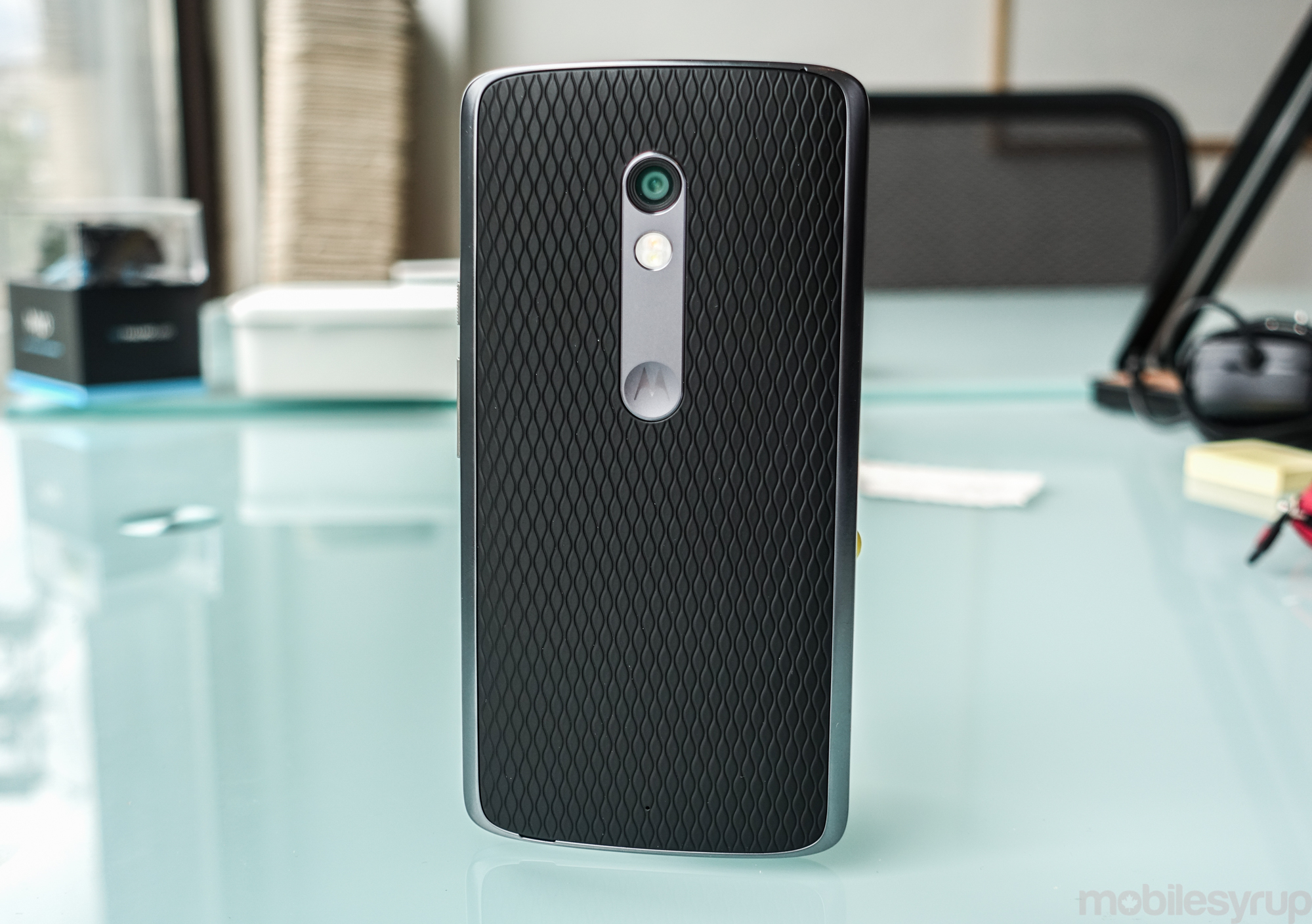
Competition
The OnePlus One existed almost on its own in the market, emerging in a year where the cheapest Nexus phone was ungainly and expensive, and the good, cheap Android phone was still a burgeoning idea. Since then, companies like Alcatel OneTouch, Asus, Motorola and others have proven that high-end specs can come at a mid-range price.
At the same time, a weakening Canadian dollar has pushed up the price of electronics to uncomfortable levels. The OnePlus One’s major attraction was its Nexus 5 price point, whereas this year you’re paying at least $500 for the entry-level Two, and nearly $600 for the larger version.
You then have a choice: you can compare it to similarly-priced phones like the Moto X Play or Asus ZenFone 2, both of which are inferior to OnePlus 2 in many ways; or you can compare it to similarly-spec’d devices like the HTC One M9 and LG G4, where the OnePlus 2 also looks favourable.
Unfortunately, the OnePlus 2 sits in the middle of all of those devices; its build is inferior to the HTC One M9 and its screen and camera pale compared to the G4. And its software is not as refined or intuitive as the Moto X Play, nor is its price as attractive as the unlocked Asus ZenFone 2.
It’s also extremely difficult to order, relying on an invite system that has heretofore locked many Canadians out of purchasing one of them.
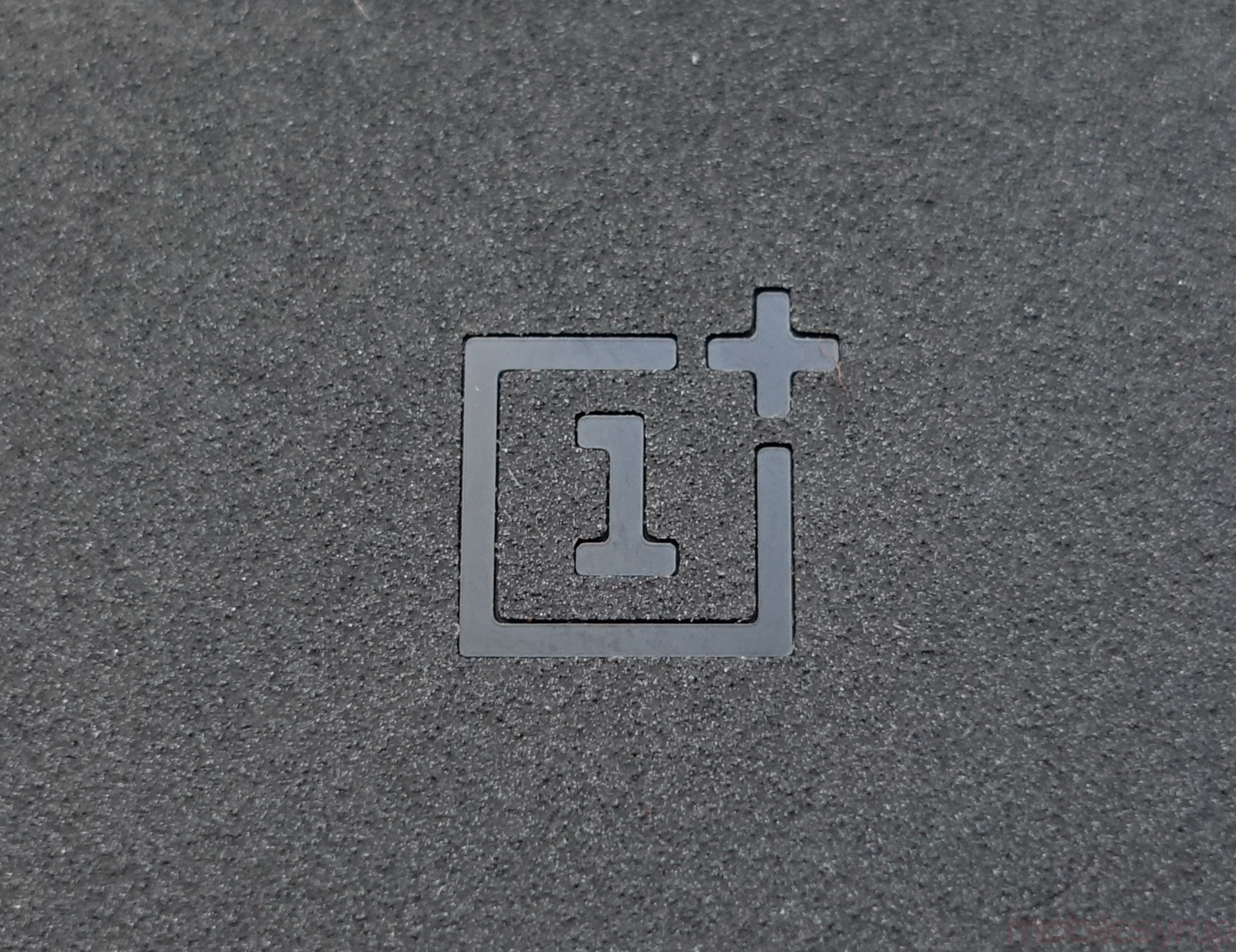
Conclusion
The OnePlus 2 may be the best phone you can buy for $479 CAD, but it comes with a bunch of caveats, the most notable of which is that it is really difficult to purchase at the moment. The phone’s flaws are all the more potent because its virtues are so obvious, and while OnePlus has scored high in its second go-round, it bodes well for the company’s third venture, likely available this time next year, pending its ability to properly scale to meet demand.
Once in hand, though, the device shines with enviable performance, ample battery life, a great screen and camera, and lots of customizations to satiate the most avid Android tweaker.
Pros
- Performance
- Battery life
- Price
- Daylight photos
- Software customization
Cons
- Availability
- Design
- Autofocus reliability
MobileSyrup may earn a commission from purchases made via our links, which helps fund the journalism we provide free on our website. These links do not influence our editorial content. Support us here.





